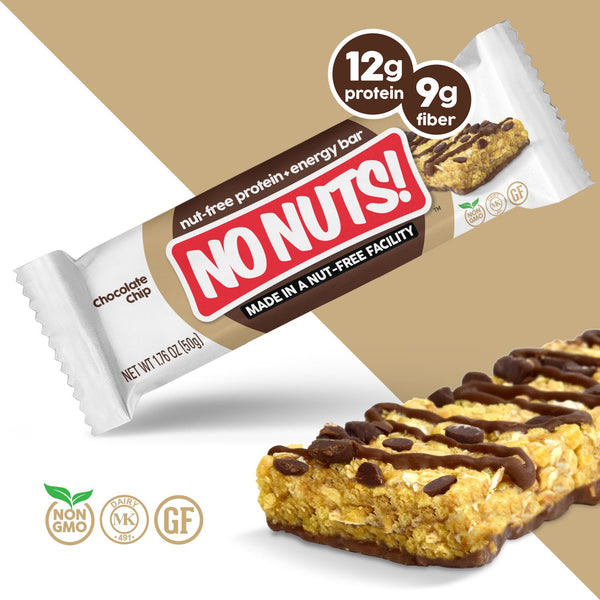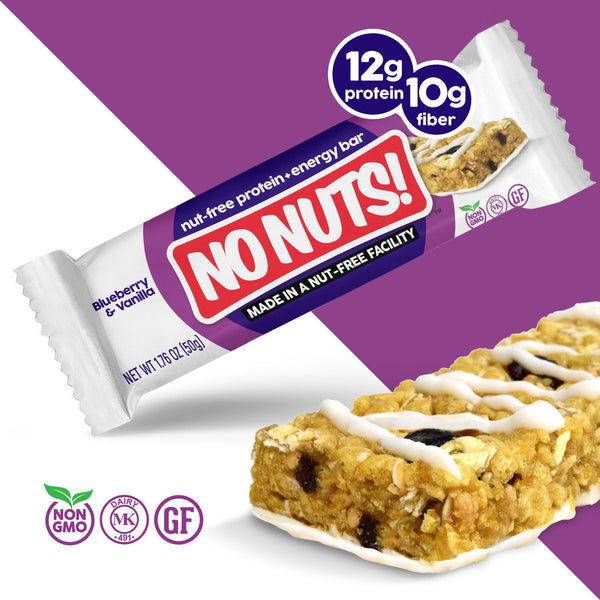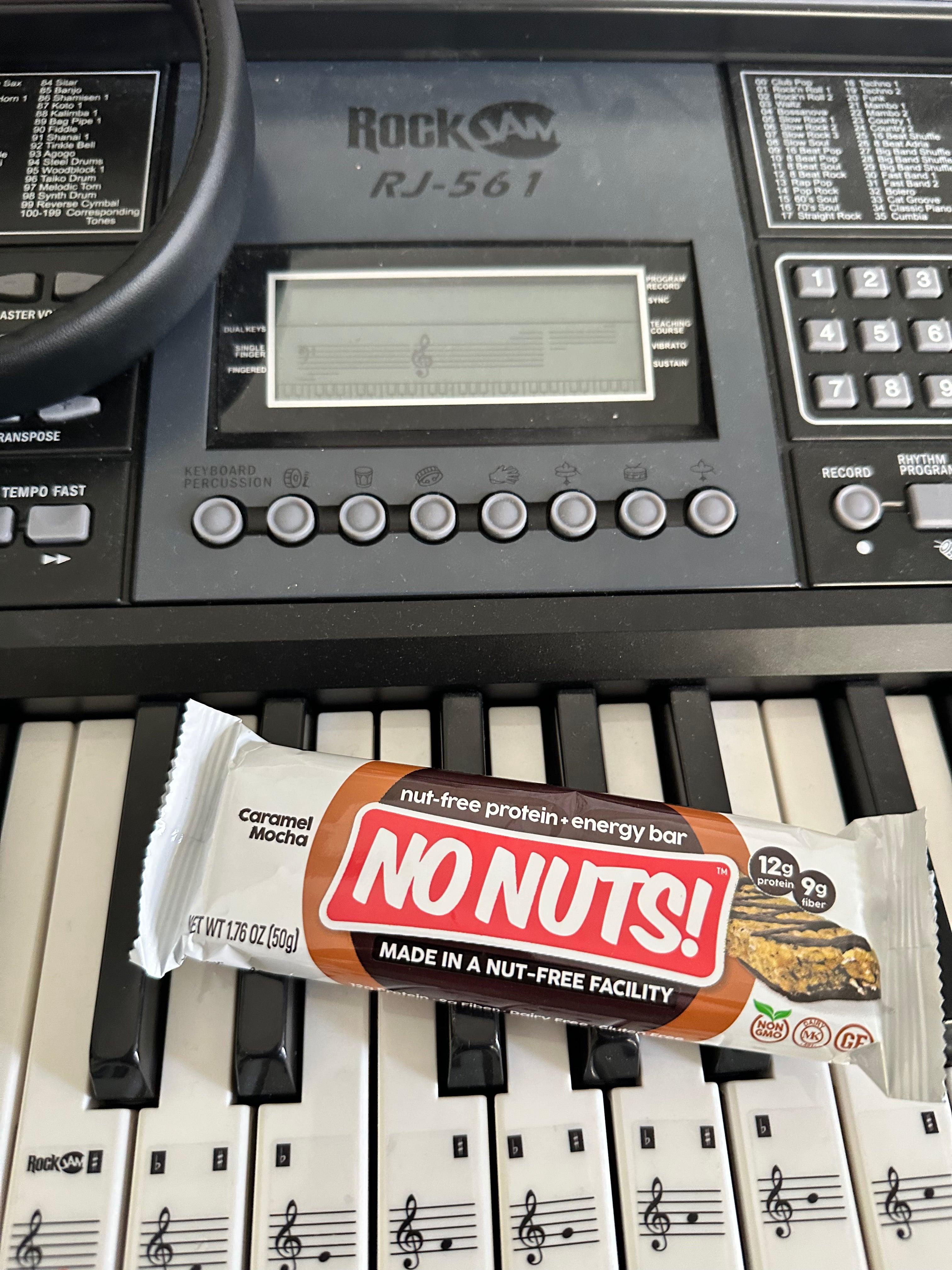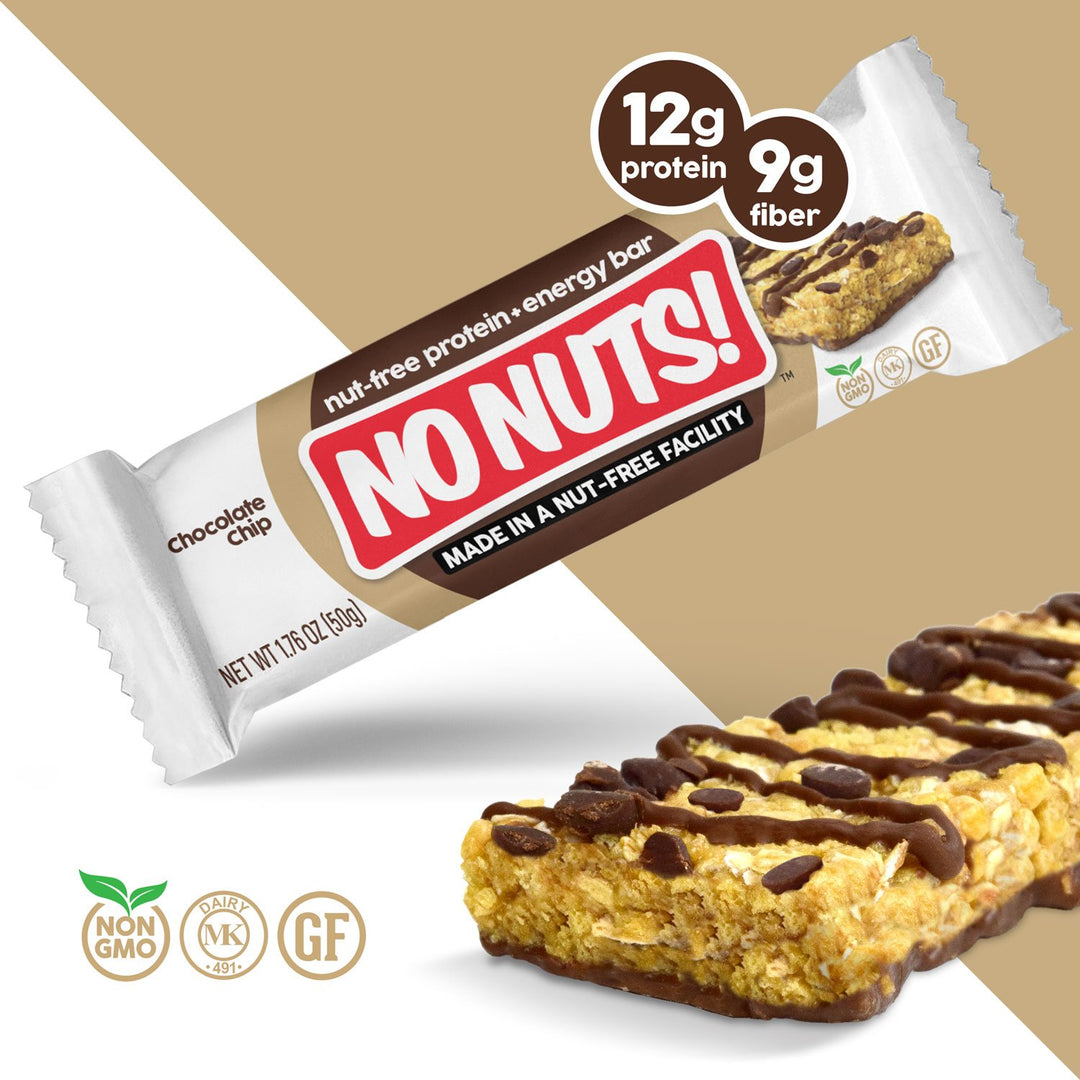Guía definitiva para loncheras escolares seguras para las alergias
May 01, 2025
Preparar almuerzos escolares puede ser complicado, especialmente si se trata de alergias alimentarias. Esta guía te ayudará a preparar almuerzos seguros, saludables y deliciosos para niños con restricciones alimentarias. Analizaremos muchas opciones aptas para alérgicos y compartiremos consejos para que la hora del almuerzo sea divertida y sin preocupaciones para tu hijo.
Conclusiones clave:
- Comprenda las alergias alimentarias comunes y las políticas escolares.
- Centrarse en fuentes de proteínas seguras y alternativas aptas para personas alérgicas.
- Incorpore frutas y verduras coloridas para una nutrición equilibrada.
- Elija granos y carbohidratos seguros para obtener energía.
- Explora opciones sin lácteos para niños intolerantes a la lactosa
- Incluya golosinas que no causen alergias para darle un toque dulce.
- Siga las pautas adecuadas de embalaje y seguridad alimentaria.
- Mantener una comunicación abierta con el personal de la escuela y otros padres.
- Dele a su hijo la concientización sobre las alergias y las habilidades de autodefensa.
1. Comprender las alergias alimentarias comunes
Es importante conocer las alergias alimentarias más comunes en los niños. Estas incluyen el cacahuete, los frutos secos, la leche, los huevos, el trigo, la soja, el pescado y los mariscos . Estas pueden causar reacciones de leves a graves. Consulte con el médico de su hijo sobre sus alergias específicas. Además, consulte con la escuela de su hijo sobre las normas de alergias, ya que pueden variar según la escuela.
2. Opciones de proteínas seguras y nutritivas
La proteína es fundamental para el crecimiento de los niños. Ayuda a desarrollar los músculos, fortalece el sistema inmunitario y contribuye al crecimiento de los niños. Aquí tienes algunas opciones de proteínas aptas para alérgicos:
- ¡Sin frutos secos! Barras de proteína: Estas deliciosas barras no contienen frutos secos y son ricas en proteína. Vienen en diferentes sabores y son ideales para picar o almorzar.
- Sándwiches de mantequilla de semillas de girasol: Es como la mantequilla de cacahuete, pero hecha con semillas de girasol. Queda deliciosa con pan integral.
- Huevos duros (si son seguros): Los huevos tienen muchísimas cosas buenas. Puedes dibujarles caras graciosas para que sean más divertidos.
- Hummus con palitos de verduras: El hummus se elabora a partir de garbanzos y combina muy bien con verduras cortadas.
- Tiras de pollo a la parrilla: El pollo está repleto de proteínas. Puedes condimentarlo de diferentes maneras para que sea más interesante.
- Ensalada de quinoa: La quinoa es un cereal rico en proteínas. Combínala con verduras para un almuerzo delicioso.
- Sopa de lentejas: Las lentejas tienen mucha proteína y fibra. Guárdala en un termo para mantenerla caliente.
3. Frutas y verduras para el color y la nutrición
Añadir muchas frutas y verduras de diferentes colores al almuerzo de tu hijo le da un aspecto atractivo y le aporta vitaminas importantes. Aquí tienes algunas ideas divertidas con frutas y verduras:
- Rodajas de manzana con canela: Rocía con jugo de limón para evitar que se doren. Puedes cortarlas en formas divertidas con cortadores de galletas. - Zanahorias baby y rodajas de pepino: Son crujientes y buenas para mojar. - Tomates cherry y tiras de pimiento morrón: Usa diferentes colores para que el almuerzo se vea bonito. - Bayas: Mezcla fresas, arándanos y frambuesas para una colorida ensalada de frutas. - Gajos de naranja o mandarinas: Son fáciles de pelar y están llenos de vitamina C. - Rodajas de kiwi: Los kiwis tienen mucha vitamina C y fibra. - Guisantes dulces: Son crujientes y un poco dulces. - Mezcla de vegetales asados: Prueba asar batatas, calabacines y zanahorias para una guarnición de vegetales calientes.
4. Granos y carbohidratos seguros
Los carbohidratos aportan energía a los niños para la escuela. Si su hijo no puede comer trigo ni gluten, pruebe estas opciones:
- Ensalada de pasta sin gluten: use pasta hecha de arroz, maíz o quinua y mézclela con verduras.
- Tortitas de arroz con untables seguros: Cubra las tortas de arroz con mantequilla de semillas de girasol o aguacate.
- Platos de quinoa o arroz: Se pueden preparar de muchas maneras diferentes.
- Wraps de tortilla de maíz: úselos en lugar de wraps de trigo para sándwiches.
- ¡Sin frutos secos! Barras de rollo de canela : No contienen gluten y tienen una buena combinación de carbohidratos y proteínas.
- Gajos de batata: hornéalos para obtener una alternativa más saludable a las patatas fritas.
- Panqueques de trigo sarraceno: Prepare mini panqueques como una alternativa divertida al sándwich.
5. Alternativas sin lácteos
Si su hijo no puede consumir productos lácteos, pruebe estas opciones:
- Yogur de coco con granola segura: es como el yogur normal pero elaborado con cocos.
- Leche de almendras o de avena: Envasarlas en un termo. Contienen calcio como la leche normal.
- Rebanadas de queso sin lácteos: Están hechas de nueces o soja y se pueden usar en sándwiches.
- ¡Sin nueces! Barras de crema de limón : son cremosas, pero no contienen leche.
- Jugo de naranja fortificado con calcio: aporta calcio y vitamina C adicionales.
- Pudín de semillas de chía: prepare este postre con leche vegetal para obtener una delicia similar a un pudín.
- Salsas a base de anacardos: si su hijo no es alérgico a los frutos secos, estas pueden ser una alternativa cremosa a las salsas lácteas.
6. Delicias seguras y sabrosas
A todos los niños les encanta un dulce en su almuerzo. Aquí tienes algunas opciones seguras:
- ¡Sin frutos secos! Galletas con chispas de chocolate : No contienen frutos secos y tienen un sabor buenísimo.
- Brochetas de fruta fresca: Coloque diferentes frutas en palitos pequeños para un postre divertido.
- Cuero de fruta casero: Haz tus propios rollitos de fruta en casa.
- Palomitas de maíz seguras: si a tu hijo le parece bien, las palomitas de maíz hechas con aire caliente pueden ser un buen capricho.
- Muffins aptos para alérgicos: prepare muffins pequeños utilizando ingredientes seguros.
- Mezcla de frutos secos y semillas: prepare su propia mezcla de frutos secos y semillas seguras.
- Paletas caseras: Congele jugo o puré de frutas en moldes para paletas.
7. Consejos para preparar almuerzos seguros
Aquí hay algunos consejos importantes para mantener el almuerzo de su hijo seguro y fresco :
- Utilice loncheras térmicas con paquetes de hielo para mantener la comida fría.
- Utilice utensilios limpios que no hayan estado en contacto con alérgenos.
- Utilice tablas de cortar separadas para alimentos que puedan provocar alergias.
- Etiquete claramente la lonchera de su hijo con su nombre y alergias.
- Enseñe a su hijo a no compartir comida con otros
- Prepare el almuerzo la noche anterior para ahorrar tiempo en la mañana.
- Utilice recipientes pequeños para mantener separados los diferentes alimentos.
- Incluya una nota sobre qué alimentos son seguros y no seguros.
- Limpie bien las loncheras y recipientes todos los días.
8. La variedad es clave
Mantener los almuerzos interesantes ayuda a los niños a disfrutar de la comida y a obtener diferentes nutrientes. Aquí tienes algunas ideas:
Prueba el paquete de muestra de 4 No Nuts! para ofrecerle a tu hijo diferentes sabores durante la semana.
- Planifique comidas diferentes para cada día de la semana
- Pruebe alimentos seguros de diferentes países.
- Utilice cortadores de galletas para hacer formas divertidas con la comida.
- Cocinar verduras de diferentes maneras
- Deje que su hijo le ayude a elegir su almuerzo entre opciones seguras.
9. La comunicación es crucial
Hablar con todas las personas involucradas en el cuidado de su hijo es fundamental. Aquí le explicamos cómo hacerlo:
- Hable con el maestro de su hijo sobre las alergias y qué hacer en caso de emergencia.
- Proporcione a la enfermera de la escuela información sobre las alergias y medicamentos de su hijo.
- Hable con el personal de la cafetería sobre las opciones de alimentos seguros.
- Cuéntele a otros padres sobre las alergias de su hijo para citas de juegos y fiestas.
- Infórmese sobre las normas de alergia de la escuela.
- Considere enviar una carta a otros padres de la clase de su hijo sobre las alergias alimentarias.
Recuerde informar a todos si ocurre algún cambio en las alergias de su hijo.
10. Empodere a su hijo
Enseñarle a su hijo sobre sus alergias le ayuda a mantenerse seguro y a desarrollar confianza. Esto es lo que debe enseñarle:
- Cómo leer las etiquetas de los alimentos
- Qué alimentos evitar
- Cómo usar su medicamento para la alergia si tiene uno
- Cuándo pedir ayuda
- Cómo decir no a los alimentos inseguros de forma educada
- Por qué es importante no compartir comida
- Cómo hablar sobre sus alergias
- Qué significa la contaminación cruzada y por qué es importante
Enséñele estas cosas de una manera que se adapte a la edad de su hijo. A medida que crezca, permítale asumir más responsabilidad sin dejar de ayudarlo.
Conclusión: Almuerzos seguros, deliciosos y sin estrés
Preparar almuerzos escolares seguros para alérgenos puede ser fácil con una buena planificación y los alimentos adecuados. Cada niño es diferente, así que adapte estas ideas a sus alergias y gustos.
Con estos consejos e ideas, podrá preparar almuerzos seguros y deliciosos para su hijo. Hay muchas maneras de preparar comidas deliciosas con proteínas, frutas, verduras y cereales seguros.
Descubre nuestros snacks sin frutos secos para añadir opciones fáciles y deliciosas a la lonchera de tu hijo. Nuestros snacks están diseñados para ser seguros para niños con alergias.
Consulte siempre con el médico de su hijo sobre sus necesidades alimentarias específicas. Manténgase informado sobre las nuevas alergias, ya que la información puede cambiar con el tiempo.
Con estos consejos, ideas y nuestros refrigerios aptos para alérgicos, puedes enviar a tu hijo a la escuela con un almuerzo que disfrutará. ¡Por almuerzos escolares felices y saludables!


















